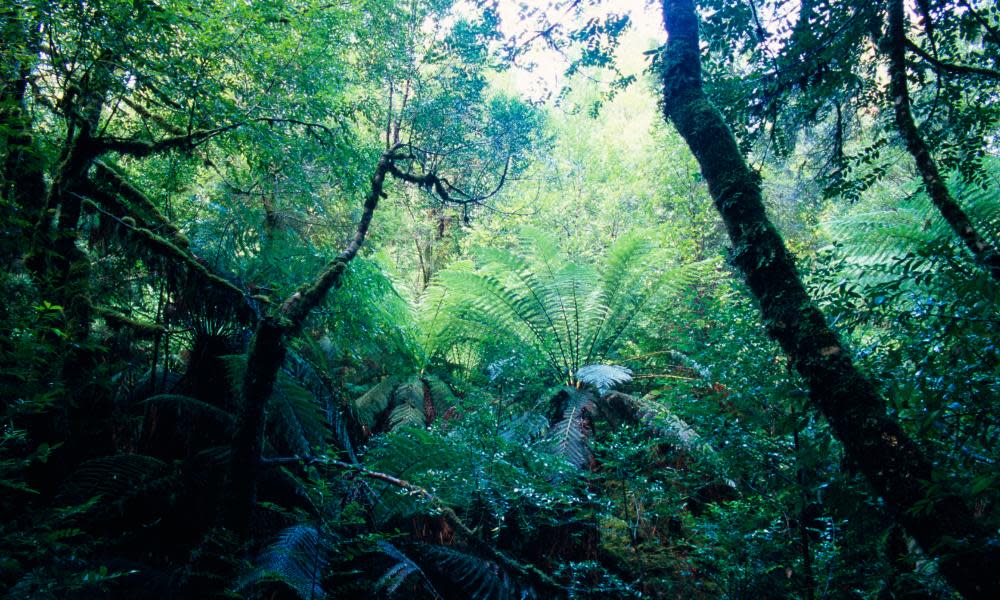Frydenberg seeks review of four-wheel-drive tracks in Tasmania's Tarkine

The federal government has requested an independent assessment of an application to open four-wheel-drive tracks along Tasmania’s heritage-listed north-west coast, potentially delaying action until the state election.
Conservationists and Indigenous groups have been fighting the Hodgman government’s proposal to lay rubber matting over middens and other Aboriginal heritage sites along the Tarkine coast to allow four-wheel-drive access.
The federal government’s referral was made because of potential risk to the national heritage-listed Indigenous cultural values of the landscape and to threatened species, incuding the orange bellied parrot and the Tasmanian devil. The new assessment will be in the form of a public environment report, written by the Tasmanian primary industries department.
Last week the Tarkine coast property of King’s Run, owned until his death by local identity Geoff King, a staunch opponent of four-wheel-driving along the coast, was formally signed over into Aboriginal hands.
Conservationists praised the decision, which means works to open the tracks are unlikely to begin before summer and could be delayed until the Tasmanian election, due in the first five months of next year.
The Wilderness Society’s Tasmania campaigner, Vica Bayley, said he had hoped the federal environment minister, Josh Frydenberg, would throw out the application as posing an unacceptable risk, but referring it for assessment was a good step.
“I think any objective assessment will find that laying plastic matting over ancient middens so you can drive four-wheel-drives over them is an unacceptable thing to do in a cultural heritage landscape,” Bayley told Guardian Australia.
A Bob Brown Foundation spokeswoman, Jenny Webber, congratulated Frydenberg on the decision to request a “proper and rigorous environmental assessment” and called on the premier, Will Hodgman, to withdraw the application.
“Premier Hodgman can still withdraw his shameful plans to open these tracks and provide secure protection for this national heritage-listed landscape,” Webber said. “He should remove the threat of cultural and environmental vandalism by off-road vehicles, keep the tracks closed.”
The Hodgman government wrote to Frydenberg last month to request approval to open tracks 501, 503 and 601, which fall at least partly within the nationally heritage listed coastline of the Arthur-Pieman conservation area, between Sandy Cape and the Pieman river.
Sections of those tracks were closed by the Giddings government in 2012 and a promise to reopen the tracks was credited for a 13.8% swing towards the Liberal party in the seat of Braddon at the 2014 state election.
The Tasmanian Aboriginal Centre successfully challenged plans to reopen the tracks in the federal court and secured a ruling that the tracks could not be opened unless the Aboriginal heritage was protected, prompting the government to propose laying rubber matting and skirting around the more sensitive areas.
Tasmania’s new environment minister, Elise Archer, acknowledged the federal government’s referral in a statement on Monday night, saying: “This is a normal part of the process and we remain 100% committed to reopening the tracks.”
The Liberal MP for Braddon, Adam Brooks, called on the Labor party to “get off the fence” and formally support a motion to open the tracks, to be put before parliament on Wednesday.
Labor has been ambivalent in its position on the tracks since losing government in 2014.
Last month it announced an election promise of $3m funding towards “greater protection and management” of the Arthur-Pieman conservation area, which it said was “about more than tracks”.
The Tasmanian Aboriginal Centre has criticised Labor’s position, with a spokesman, Michael Mansell, telling the ABC: “It seems to me that the need to get the redneck vote has got the Tasmanian Liberal government vying for that vote, and the Tasmanian and Australian Labor parties afraid not to lose that vote.”
Once the public environment report has been finalised it will be released for public comment for at least four weeks before Frydenberg makes a final decision. It is then subject to a 28-day appeal period.

 Yahoo News
Yahoo News 
